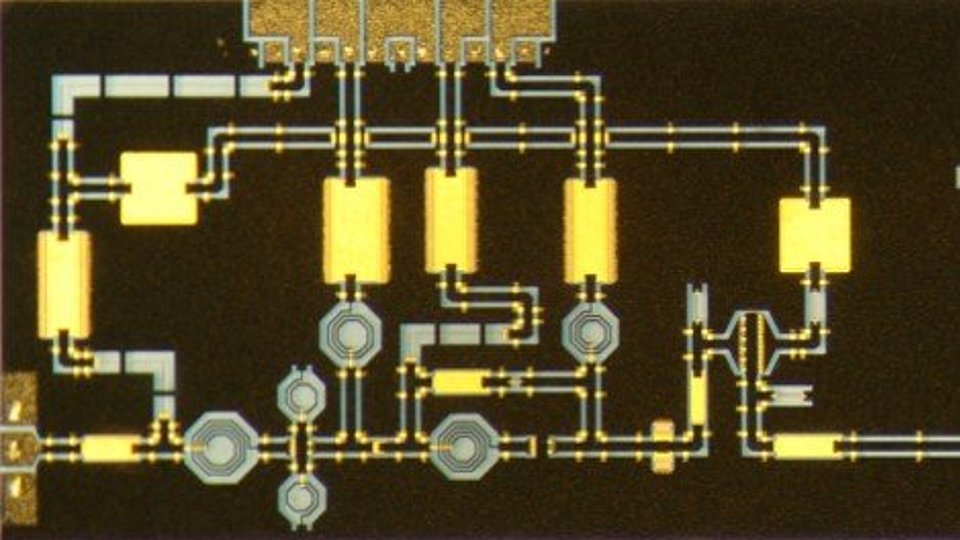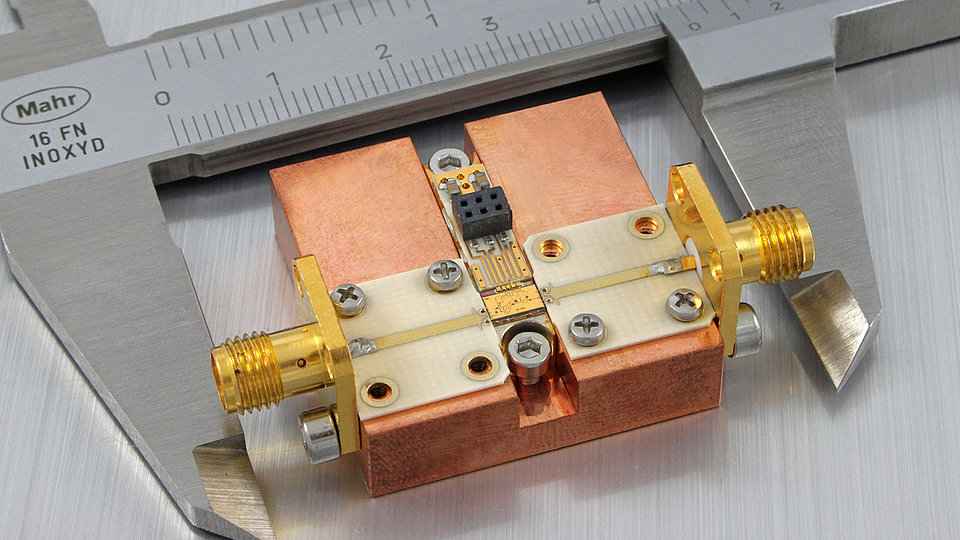Robust Gallium Nitride Low-Noise Amplifiers
The signals received through a wireless link are commonly very weak. Therefore, low-noise amplifiers (LNAs) are used in the first receiver stage in order to amplify the signal to a power level required for further processing without adding significant distortion. Although LNAs are designed to amplify very low power levels, there are chances that they receive very strong signals, which is not desired. This could happen, for example, if receive and transmit units are placed close to each other, like in mobile base stations and radar frontends. The traditional approach to prevent damage from the LNA due to input overdrive is to place power-limiting circuits between the antenna and the LNA.
Excellent properties

LNAs based on GaN transistors, on the other hand, have the potential to withstand high input overdrive powers without requiring protection circuitry, since the material system intrinsically provides high breakdown voltages and high-power handling capability. Currently, our LNAs survive input powers of 24 W – compared to slightly above 10 W for other published GaN LNAs and typical roughly 100 mW for commercial LNAs in conventional GaAs technology. Thus, our LNAs enable single-chip transceivers even for high-power applications.
Current research activities
- ultra-robust LNAs
- integration of LNA and power amplifier PA as single-chip solution in optimized GaN-technology
- LNA-demonstrator in AlN-HEMT-technology
These activities are performed in close collaboration with the BTU Cottbus-Senftenberg, department for Hochfrequenz- und Mikrowellentechnik, Ulrich-L.-Rohde Stiftungsprofessur, within the BTU-FBH JointLab Microwaves .
Integrated transceivers for 5G telecommunication in strained GaN-HEMT technology
DFG Sachbeihilfe
gepris.dfg.de/gepris/projekt/426573565
Ka-band AlN amplifier MMICs
Teilprojekt des BMBF-geförderten Verbundprojekts Erforschung innovativer Leistungstransistoren auf Basis des neuartigen Materialsystems Alumniniumnitrid - ForMikro-LeitBAN
elektronikforschung.de/projekte/formikro-leitban
Highly robust low-noise amplifers
DFG Sachbeihilfe
gepris.dfg.de/gepris/projekt/387060302
